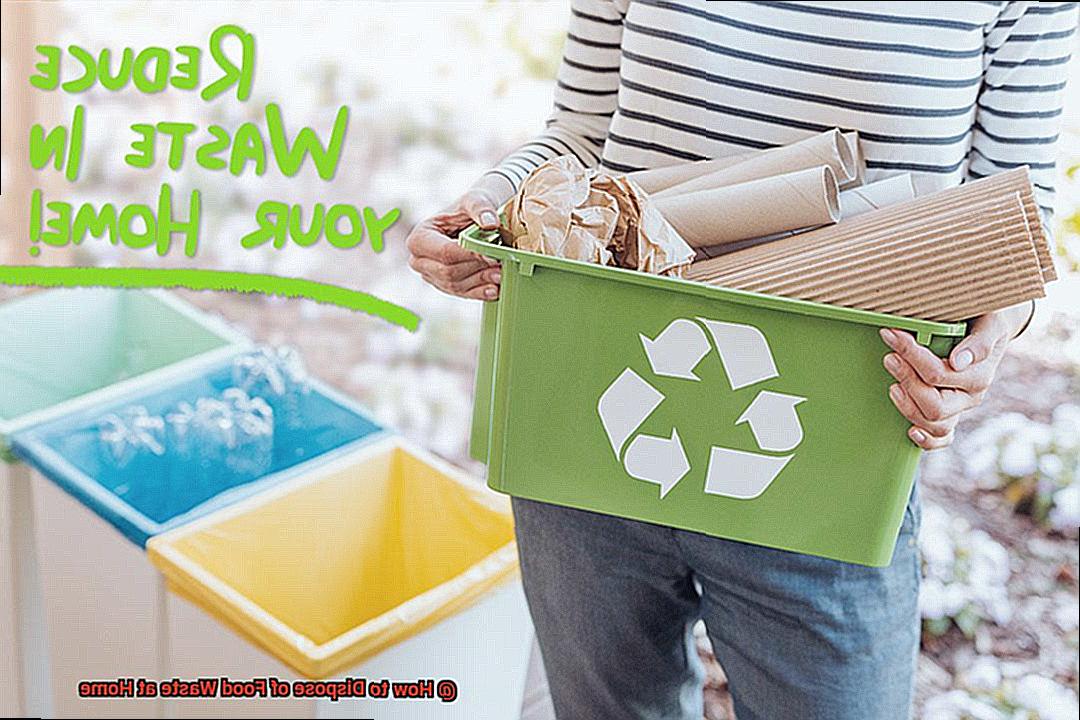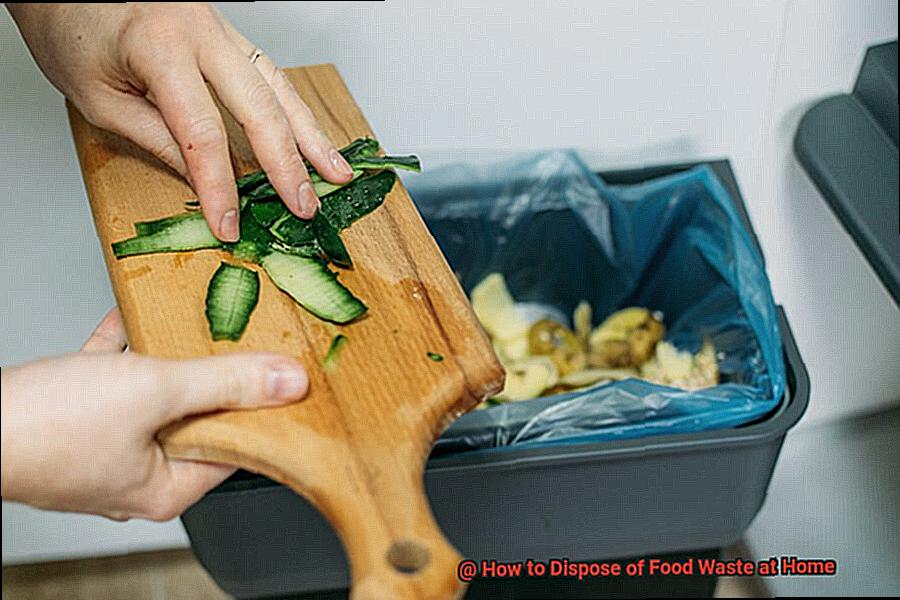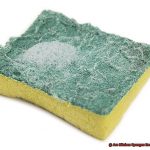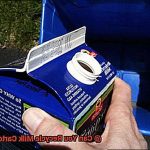Are you looking for ways to reduce your kitchen bin’s overflowing food waste? With the urgency of climate change, disposing of our food waste properly is more important than ever. But how can we do this without adding to the garbage pile or harming the environment?
The good news is that there are several ways to safely and effectively get rid of food waste at home. From composting to using worms, these techniques can help minimize your carbon footprint and give back to nature.
In this blog post, we’ll explore some of these methods and why they’re so important in lowering our environmental impact. We’ll start by looking at composting as a way to turn food scraps into rich soil for your garden or potted plants.
Then we’ll move on to vermicomposting, which uses worms to break down organic matter and create nutrient-rich fertilizer for your plants. Finally, we’ll discuss anaerobic digestion – a process that converts organic matter into biogas and fertilizer.
So, if you’re interested in learning about simple yet effective ways to get rid of food waste in an eco-friendly manner, keep reading.
What is Composting?
Contents
Composting is an age-old method of transforming organic waste into nutrient-rich soil that can be used to nourish gardens and potted plants.
It’s a simple and cost-effective way to reduce food waste while helping the environment. The composting process begins by collecting organic materials such as food scraps, leaves, grass clippings, and other plant trimmings in a container near your kitchen.
Once the container is full, you can move its contents to a compost bin or worm bin outside. Here, oxygen, moisture, and heat combine with microorganisms to break down the organic matter into smaller particles.
After months of decomposition, you’ll have dark, crumbly humus ready to use in your garden or potted plants. Not only does composting help reduce food waste from landfills, but it also helps improve soil quality while reducing water pollution.
How to Compost Food Waste at Home
Composting is a simple and eco-friendly way to dispose of food waste at home while also benefiting the environment.
By composting food waste, you can reduce the amount of organic waste that goes into landfills, as well as produce a nutrient-rich soil amendment for your garden or landscaping projects.
Choosing a Container for Your Compost Bin
To start composting, you will need a container for your compost bin. This can be anything from a small bin with a lid to a large plastic tote with holes drilled into the sides for ventilation. Be sure to place your container in a shady, well-drained area that is easily accessible for adding food waste and turning the compost.
What You Can Compost
When it comes to what to compost, there are two types of materials
Maintaining Your Compost Bin
To maintain your compost bin, turn it regularly to prevent clumping and provide oxygen; add water as needed so that it remains moist but not wet. Depending on the materials used and how often they are turned over, it can take anywhere from a few weeks to several months for the compost pile to be ready for use in gardening or landscaping projects.
Benefits of Composting Food Waste at Home
Not only does composting reduce organic waste from going into landfills but also helps reduce greenhouse gas emissions caused by decomposing organic matter in landfills. In addition, when you create nutrient-rich soil from kitchen scraps rather than using chemical fertilizers on plants or vegetables in your garden or yard projects, you are reducing the amount of pollution caused by these chemicals entering our water systems.
Benefits of Composting
Composting is a simple, yet effective way to reduce your environmental footprint and have a positive impact on the climate.
Not only does it help reduce the amount of organic waste that ends up in landfills, but it also produces nutrient-rich soil that can be used to improve soil quality and promote sustainable gardening practices. To get started, collect any fruit and vegetable scraps, eggshells, coffee grounds, tea bags, and yard trimmings in a container near your kitchen.

When the container is full, empty it into a compost bin outside or a worm bin. Avoid throwing fibrous fruits and vegetables like celery and corn husks in the garbage can as they can clog pipes.
If you have liquid food waste such as soups or broths, allow them to cool and solidify before disposing of them in the garbage or compost. The benefits of composting are numerous for both individuals who compost at home and for the environment as a whole.
Composting helps minimize the production of hazardous greenhouse gases such as methane by reducing landfill usage. It also contains essential nutrients like nitrogen, phosphorus, and potassium that plants need to grow.
This reduces our reliance on synthetic fertilizers and pesticides which are harmful to our climate. Finally, it raises environmental awareness by providing an opportunity for individuals to take action to reduce their environmental footprint – something that may inspire others to do the same.
Using a Garbage Disposal for Food Waste
Investing in a garbage disposal can be the perfect solution.
Garbage disposals make the process of disposing food waste quick and efficient, as they shred it into tiny pieces that can be safely washed down the drain and converted into fertilizer or electricity. Using a garbage disposal is easy: simply turn on the water in the sink and then turn on the unit.
When feeding food waste into it, make sure to avoid any non-food items such as plastic, metal or glass. Additionally, fibrous or stringy food waste like banana peels or celery should be avoided as this could cause the machine to jam.
To keep your garbage disposal in optimal condition, regular cleaning with ice cubes, vinegar or lemon juice is recommended. This will help remove any buildup of food waste or bacteria that could lead to clogs or damage to your unit.
Furthermore, it’s important to follow local regulations for disposal of food waste so that it is processed correctly and safely.
What Not to Put Down the Garbage Disposal
While it may seem like the simplest option, there are certain items that should never be put down the drain.
From bones to coffee grounds and fibrous vegetables, these items can cause serious damage to your disposal or even clog pipes. To make sure your garbage disposal runs smoothly and avoid costly repairs, here’s a list of things you should never put down the drain:
- Bones: Though small and seemingly harmless, bones can wreak havoc on your garbage disposal blades and motor.
- Eggshells: Contrary to popular belief, eggshells shouldn’t be thrown into the garbage can as they create tiny particles that stick to pipes and cause blockages.
- Coffee grounds: Though innocent-looking, coffee grounds can accumulate in pipes and cause blockages too.
- Grease and oil: When exposed to cold water, grease and oil will solidify in pipes, creating clogs that are impossible.
How to Dispose of Liquid Food Waste
Properly disposing of liquid food waste is essential to keep your plumbing system in working order and reduce the amount of waste going into landfills. Here are five effective ways to dispose of liquid food waste safely and responsibly.
Know What Not to Pour Down the Drain
Oils and fats should never be poured down the drain as they will solidify and cause blockages. Similarly, dairy and meat liquids should also be avoided as they can spoil and produce unpleasant odors in your pipes.
Run Hot Water
For liquids such as vegetable broth, soups, or juices, pour them down the drain while running hot water to help flush them through the pipes. If necessary, you can strain them beforehand to remove any solid particles.
Be Cautious with Septic Tanks
If you have a septic tank, avoid pouring any oils, fats, or dairy products into it as they can disrupt the natural balance of bacteria needed to break down waste. Consider composting these items or disposing of them in the trash instead.
Compost It
Composting oils, fats, dairy products, or other liquids that should not be poured down the drain is a great way to add moisture and nutrients to your garden soil for healthy plant growth.
Local Laws
In some areas, local regulations may require you to dispose of liquid food waste in a specific manner so make sure you check with your municipality before disposing of any food waste.
The Global Impact of Food Waste Disposal
The global impact of food waste disposal is immense, with one-third of all the food produced in the world being lost or wasted every year.
This has a significant effect on the environment, food security, and the economy. When food waste is disposed of in landfills, it produces methane – a powerful greenhouse gas that contributes to climate change.
Furthermore, it takes up valuable space in landfills and depletes natural resources such as water and soil nutrients used to grow food. In developing countries, food insecurity and malnutrition are common issues that are exacerbated by elevated levels of food waste.
Fortunately, there are initiatives in place globally to reduce food waste. Governments have imposed regulations, food sharing programs have been launched, and educational campaigns have been initiated to raise awareness about this issue.
Moreover, we can make a difference at home by composting our scraps and reducing our own personal contribution to this problem.
md5hmSu7fPg” >
Regulations for Disposing of Food Waste
But did you know that properly disposing of food waste can help reduce emissions and greenhouse gas emissions?
It’s true, and there are regulations in place to help us do our part for the environment. When it comes to disposing of food waste at home, it’s important to check with local regulations to see if there are any specific guidelines for your area.
Many cities offer curbside food waste pickup services and transport food scraps to a commercial composting facility. This is a great way to turn your food waste into something useful.
You can also start a backyard compost pile as another way to get rid of food waste in an environmentally-friendly way. Simply add your food scraps and yard waste (like leaves and grass clippings) into a compost bin, and they will decompose into nutrient-rich soil amendment that is perfect for growing plants.
Also Read: How To Dispose Of Spoiled Milk Safely – DisposeOfThings.com
Conclusion
Food waste disposal is a critical environmental issue that must be addressed.
We can all do our part by following local guidelines for disposing of food waste and composting at home. Composting is an easy, yet effective way to reduce the amount of organic waste that ends up in landfills while also creating nutrient-rich soil for gardening or landscaping projects.
Additionally, investing in a garbage disposal will help with disposing of food scraps quickly and efficiently, while avoiding costly repairs. It’s also important to know what not to do to prevent clogs or damage.
By taking these actions, we can minimize our environmental footprint and have a positive impact on our climate.





